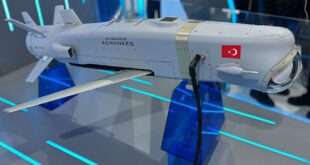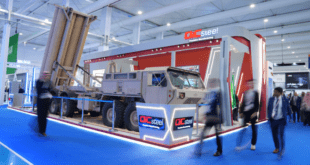Lockheed Martin has assembled, on the 27th of May, NASA’s InSight Mars spacecraft, which is now undergoing environmental testing at the company’s Space Systems facilities near Denver. InSight is NASA’s next mission to Mars and will be the first mission devoted to understanding the interior structure of the planet.
InSight will endure the extreme vibration and noise of launch, a long journey through the vacuum and cold of deep space and the gauntlet of entry through the Martian atmosphere before beginning operations on the surface. Because of the extreme environments the spacecraft will encounter during its mission, the lander will undergo a variety of rigorous tests that will ensure it can survive the journey.
During the environmental testing phase, the lander will be exposed to extreme temperatures, vacuum and a litany of other tests through the end of the year. The first of these tests will be a thermal vacuum test in the spacecraft’s “cruise” configuration used during its seven-month journey to Mars.
InSight will then be subjected to a barrage of additional tests, including reverberant acoustic, separation and deployment shock, and electromagnetic interference and compatibility testing. The testing phase concludes with a second thermal vacuum test where the spacecraft is exposed to the temperatures and atmospheric pressures it will experience as it operates on the surface of Mars.
“The assembly of InSight went very well, and now it’s time to see how it performs,” said Stu Spath, InSight program manager at Lockheed Martin Space Systems Company. “The environmental testing regimen is designed to wring out any issues with the spacecraft so we can resolve them while it’s here on Earth. This phase takes nearly as long as assembly, but we want to make sure we deliver a vehicle to NASA that will perform as expected in extreme environments.”
Scheduled to launch in March 2016 from Vandenberg Air Force Base, California, InSight is a robotic exploration mission that will record measurements of the interior of the Red Planet, giving scientists unprecedented detail into the evolution of Mars and other terrestrial planets. The InSight mission will address one of the most fundamental issues of planetary and solar system science; understanding the processes that shaped the rocky planets of the inner solar system (including Earth) more than four billion years ago.
“It’s great to see the spacecraft put together in its launch configuration,” said InSight Project Manager Tom Hoffman at NASA’s Jet Propulsion Laboratory (JPL). “Many teams from across the globe have worked long hours to get their elements of the system delivered for these tests. There still remains much work to do before we are ready for launch, but it is fantastic to get to this critical milestone.”
The InSight mission is led by Bruce Banerdt of (JPL). The science team includes U.S. and international co-investigators from universities, industry and government agencies. The French space agency (CNES) and the German Aerospace Center (DLR) are also each contributing a science instrument to the two-year scientific mission. InSight’s international science team combines researchers from Austria, Belgium, Canada, France, Germany, Japan, Poland, Spain, Switzerland, the United Kingdom and the United States. JPL, a division of the California Institute of Technology, manages InSight for NASA’s Science Mission Directorate.
 Defense Arabia Defense Arabia is your source for the latest news on defense, national security and analysis in the Middle East.
Defense Arabia Defense Arabia is your source for the latest news on defense, national security and analysis in the Middle East.



